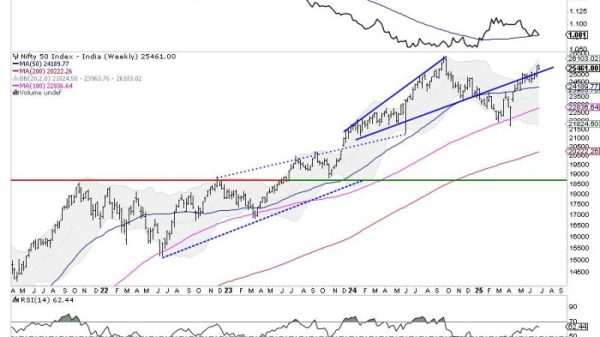The outbreak of violence in Israel and the Gaza Strip, triggered by the brutal incursion of Hamas militants on Oct. 7, has prompted a sadly predictable response: physical and rhetorical attacks on Jewish and Muslim people in the United States and elsewhere. A child stabbed to death in Illinois. A surge in antisemitism across the country.
Again, this was predictable. The pattern over the past decade has been that the targets of hate crime in the United States are often members of groups that are a collective target or a collective focus of the public’s attention.
On Monday, the FBI released data documenting the number of hate-crime reports in the country last year. The figure increased to more than 11,000 in 2022, up 7 percent over 2021 and double the level in 2014.
This surge isn’t solely a function of an increase in criminal acts. The FBI data relies on reporting from local law enforcement agencies. The number of respondents and the quality of their data can affect the top-line numbers. But some of the increase is certainly related to an actual rise in occurrences — as a closer look at the targets of those crimes suggests.
Consider the percentage of reported hate crimes targeting groups by race, LGBTQ identity and religion. Looking at percentage allows us to sidestep questions about the total number of crimes that occurred in a year and, instead, to consider how the targets of those crimes changed.
Race and ethnicity. A few patterns are clear from the FBI data. Black Americans have consistently been the most commonly targeted group over the past decade, but that surged in 2020 — a year in which the killing of George Floyd in Minnesota drew new attention and protests centered on law enforcement.
Notice, too, the spike in incidents targeting Asian Americans after 2020. In that year, the coronavirus traveled from China, its point of first detection, to the United States, triggering a spate of attacks targeting Asian Americans generally. After a peak in 2021, Asian Americans became a less-frequent target in 2022.
Hispanic Americans were a more common target of attacks in 2018 and 2019, perhaps in part because of the increased attention President Donald Trump was paying to immigration and the southern border. The government shutdown that began in late 2018 and extended into 2019 was centered on Trump’s push for funding for a wall on the U.S.-Mexico border; he would eventually declare a state of emergency to appropriate funding for the project.
White Americans have consistently been the targets of about 10 percent of hate crimes over the past decade. Whites make up about 60 percent of the U.S. population.
LGBTQ+. The FBI tracks a number of different attacks, breaking out ones on transgender people or gay men, for example. Collectively, the percentage of hate crimes targeting LGBTQ+ people was trending down through 2020, when the percentage sharply reversed. That shift overlaps with new rhetorical attacks from the right against LGBTQ+ people and culture, including on the visibility of transgender people. The percentage of hate crimes targeting transgender people has doubled since 2017.
Religion. Jewish Americans continue to be the most commonly targeted religious group in American hate crimes. There was a big drop in the percentage of attacks targeting Jewish Americans from 2019 to 2020, due in part to the increase in attacks on Black Americans. From 2021 to 2022, there was a big increase.
Attacks on Muslims have declined since 2015 and 2016, a period in which the Islamic State was engaged in terrorist attacks and politicians including Trump were pointing to Muslims as a threat.
It is admittedly easy to retrofit the data to patterns in the news. Correlation and causation are distinct, and we may seek out hateful incidents or be more likely to recognize them in moments of tension.
But this also comports with our experience: Moments like this one, in which a group becomes a focus of attention and anger, might understandably be ones in which members of those groups are under threat. The data suggests they do.







































